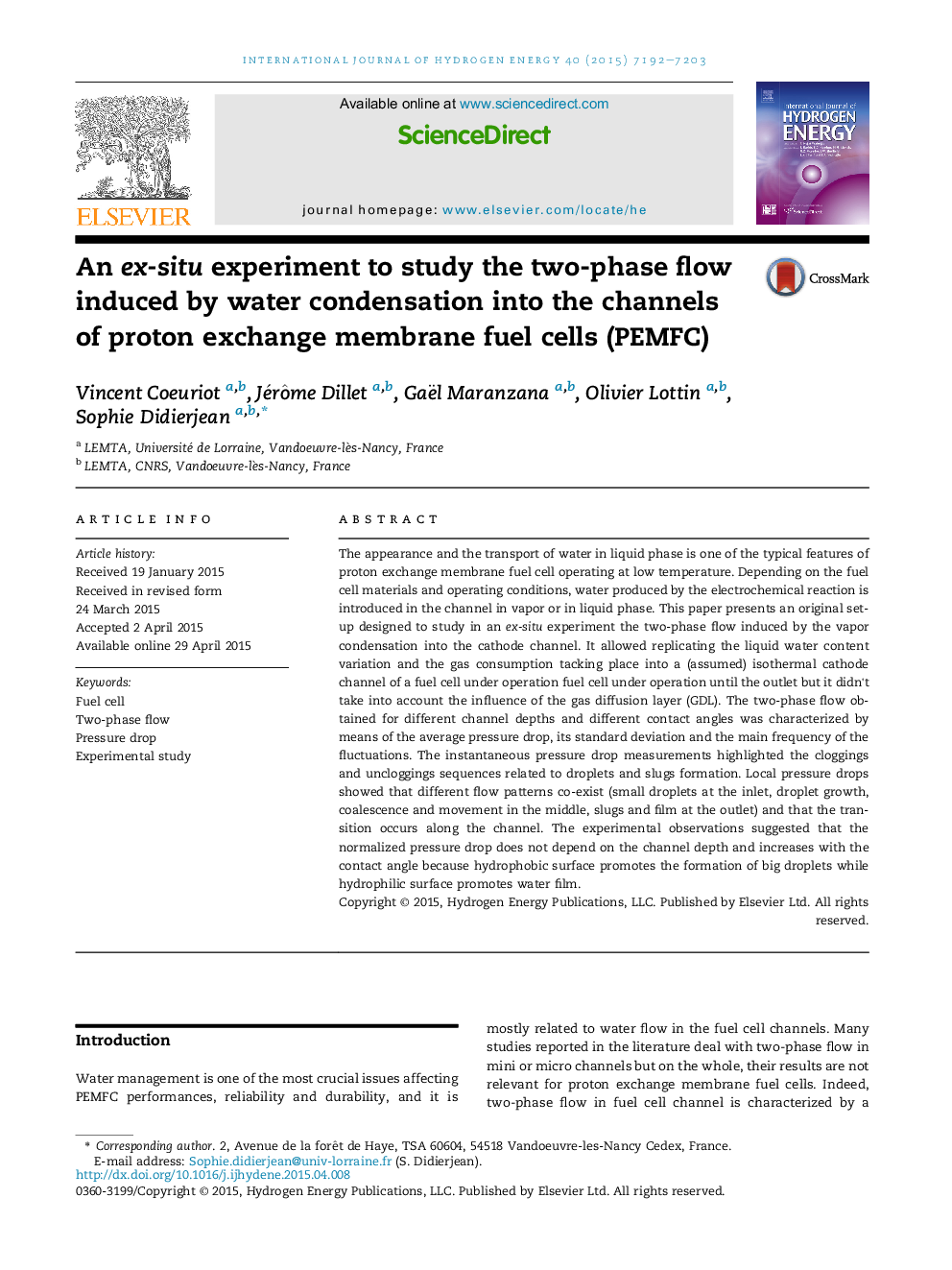| Article ID | Journal | Published Year | Pages | File Type |
|---|---|---|---|---|
| 1279902 | International Journal of Hydrogen Energy | 2015 | 12 Pages |
•An ex-situ experiment allowed to study the two-phase flow in fuel cell channel.•The depth and the contact angle were varied.•The measured pressure drop highlighted the structures of the two-phase flow.•Conclusion for fuel cell efficiency were given.
The appearance and the transport of water in liquid phase is one of the typical features of proton exchange membrane fuel cell operating at low temperature. Depending on the fuel cell materials and operating conditions, water produced by the electrochemical reaction is introduced in the channel in vapor or in liquid phase. This paper presents an original set-up designed to study in an ex-situ experiment the two-phase flow induced by the vapor condensation into the cathode channel. It allowed replicating the liquid water content variation and the gas consumption tacking place into a (assumed) isothermal cathode channel of a fuel cell under operation fuel cell under operation until the outlet but it didn't take into account the influence of the gas diffusion layer (GDL). The two-phase flow obtained for different channel depths and different contact angles was characterized by means of the average pressure drop, its standard deviation and the main frequency of the fluctuations. The instantaneous pressure drop measurements highlighted the cloggings and uncloggings sequences related to droplets and slugs formation. Local pressure drops showed that different flow patterns co-exist (small droplets at the inlet, droplet growth, coalescence and movement in the middle, slugs and film at the outlet) and that the transition occurs along the channel. The experimental observations suggested that the normalized pressure drop does not depend on the channel depth and increases with the contact angle because hydrophobic surface promotes the formation of big droplets while hydrophilic surface promotes water film.
